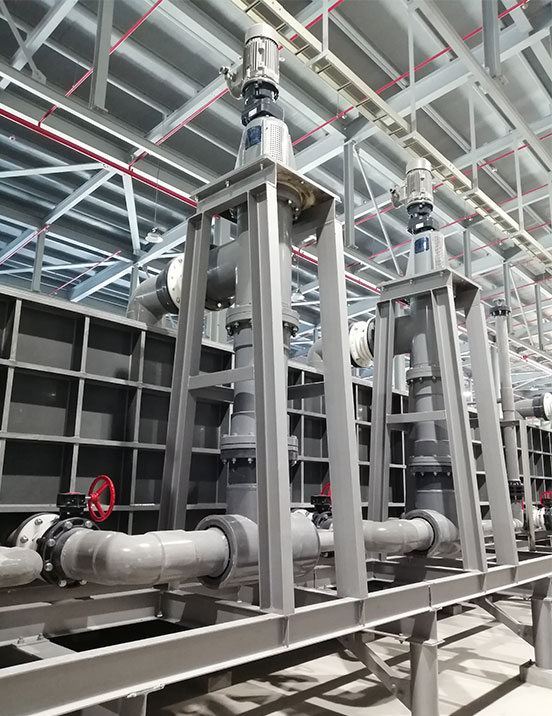The efficiency of a Mixer Settler Extractor in terms of extracting one substance from another in a liquid-liquid extraction process is evaluated through several key parameters and performance indicators. These metrics assess the effectiveness of the extraction process in achieving the desired separation and recovery of the target substance(s) from the feed mixture.
Extraction Efficiency (EE):
Extraction efficiency is a fundamental measure of how well a
Mixer Settler Extractor performs in separating the target substance(s) from the feed mixture. It is typically expressed as the percentage of the target substance(s) extracted relative to the total amount present in the feed mixture. The higher the extraction efficiency, the more effective the Mixer Settler Extractor is in extracting the desired substance(s).
Distribution Coefficient (Kd):
The distribution coefficient, often denoted as Kd, quantifies the partitioning of the target substance(s) between the two immiscible liquid phases (aqueous and organic) in the Mixer Settler Extractor. It represents the equilibrium ratio of the concentration of the target substance(s) in the organic phase to its concentration in the aqueous phase. A higher distribution coefficient indicates greater affinity of the target substance(s) for the organic phase, leading to more efficient extraction.
Mass Transfer Rate:
The mass transfer rate characterizes the rate at which the target substance(s) transfer from one liquid phase to the other during the mixing stage of the extraction process. It is influenced by factors such as agitation intensity, contact time, and the physical and chemical properties of the immiscible liquids. A higher mass transfer rate signifies faster and more efficient extraction kinetics.
Selectivity (α):
Selectivity, denoted as α, measures the preference of the Mixer Settler Extractor for extracting the target substance(s) over other components present in the feed mixture. It is calculated as the ratio of the distribution coefficients of the target substance(s) and interfering components. A higher selectivity indicates a higher preference for the target substance(s), leading to improved separation efficiency.
Separation Factor (β):
The separation factor, denoted as β, quantifies the degree of separation achieved between the target substance(s) and interfering components in the Mixer Settler Extractor. It is calculated as the ratio of the distribution coefficients of the target substance(s) and interfering components. A higher separation factor indicates a more effective separation of the target substance(s) from the feed mixture.
Recovery Efficiency:
Recovery efficiency assesses the percentage of the target substance(s) successfully recovered from the separated liquid phases after extraction. It considers factors such as losses during phase separation, residual concentrations in the aqueous and organic phases, and any inefficiencies in the extraction process. Higher recovery efficiency indicates a more complete extraction and recovery of the target substance(s).
Overall Process Efficiency:
Overall process efficiency integrates various factors, including extraction efficiency, selectivity, recovery efficiency, and operational parameters, to provide a comprehensive assessment of the Mixer Settler Extractor's performance in achieving the desired separation goals. It considers both the technical effectiveness and the economic feasibility of the extraction process.
Process Optimization:
Continuous improvement and optimization of the extraction process parameters, such as agitation speed, phase ratios, temperature, and flow rates, are essential for maximizing the efficiency of the Mixer Settler Extractor. Experimental design methodologies, such as factorial design or response surface methodology, can be employed to systematically evaluate and optimize the extraction process for enhanced efficiency.
